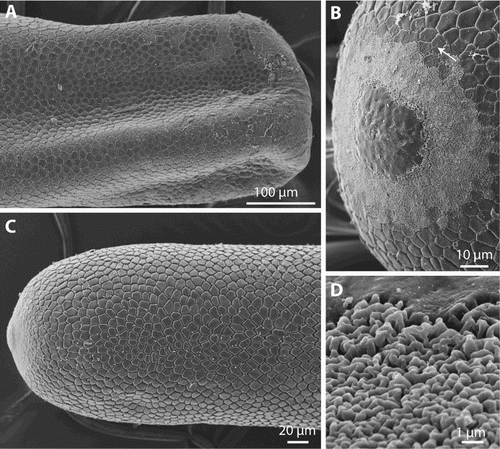Figures & data
Figure 1. Collection sites in Otago, South Island, New Zealand. ID, Ida Range; OM, Old Man Range; RP, Rock and Pillar Range.
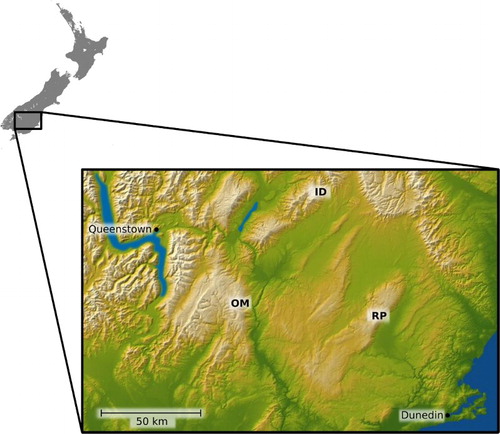
Table 1. GenBank accession numbers of nematomorph sequences used for phylogenetic analyses.
Figure 2. Composite 18S maximum likelihood (ML)/Bayesian inference phylogenetic tree of Gordionus maori specimens and selected nematomorph reference sequences. Bayesian posterior probabilities shown above nodes; ML bootstrap support values shown below nodes. The branch containing the specimens of Gordionus maori n. sp. is marked in red. The labels of the specimens are their accession numbers (see text).
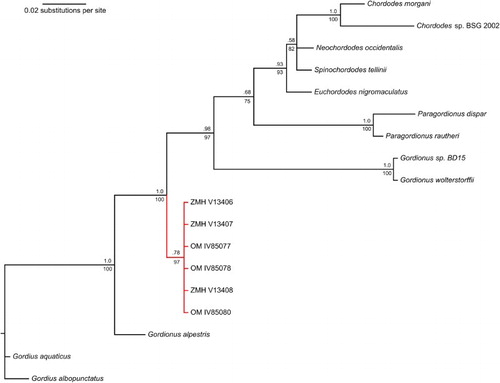
Figure 3. Composite CO1 maximum likelihood (ML)/Bayesian inference phylogenetic tree of Gordionus maori specimens and selected nematomorph reference sequences. Bayesian posterior probabilities shown above nodes; ML bootstrap support values shown below nodes. The branch containing the specimens of Gordionus maori n. sp. is marked in red. The labels of the specimens are their accession numbers (see text).
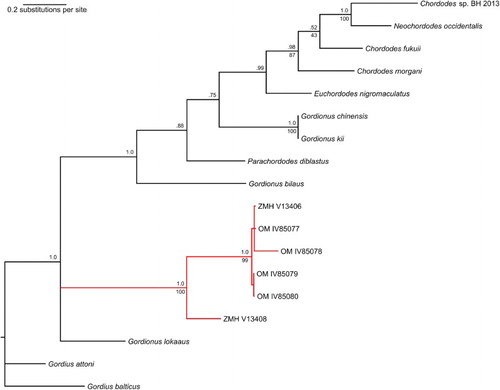
Figure 4. Gordionus maori n. sp. A, Overview of the cuticle of ZMH V13407; B–F, pattern of areoles and interareolar spaces in specimens ZMH V13406 (B), ZMH V13407 (C), paratype OMNZ IV85079 (D) and ZMH V13408 (E–F); G, fine structure of areoles and interareolar structures in ZMH V13407.

Figure 5. Gordionus maori n. sp. A–C, Ventral view of posterior end of ZMH V13406 (A), ZMH V13407 (B) and OMNZ IV85078 (holotype) (C). Encircled is the region of the cloacal opening, pbr indicates the precloacal rows of bristles; D, lateral view of a row of very large bristles in the holotype (OMNZ IV85078).
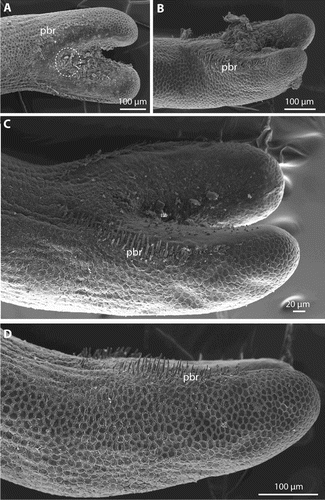
Figure 6. Gordionus maori n. sp. A–B, Magnification of precloacal bristles (pbr), encircled are some examples of apically branching bristles. ZMH V13407 (A), holotype (OMNZ IV85078) (B); C, spines (arrows) on the inside of the tail lobes in holotype; D, hemispherical areoles and short bristles (arrows) on the tips of the tail lobes in ZMH V13407.
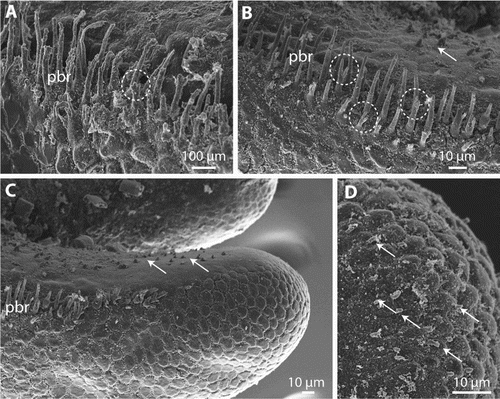
Figure 7. Gordionus maori n. sp. A, Posterior end of female specimen OMNZ IV85079 (paratype); B–D, anterior end in female specimen ZMH V13408, showing the changing pattern between smooth tip of the animal, region of alternate cuticular structure and transition to areoles. D shows the fine structure of the intermediate area.
